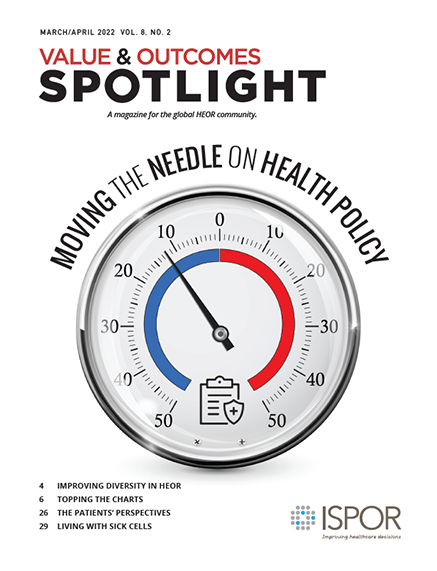RWE/RWD: Tools to Drive Health Policy
Health policies—particularly policies related to public health—have undoubtedly and profoundly changed health status worldwide. From laws and regulations such as seat belt mandates to policies related to proper prescription and dispensation of and access to life-saving medicines (eg, vaccines), these polices have reshaped community consciousness of and greatly improved public health. Although in the best interest of the target population, health policy decisions can be extremely complex and are influenced by several social, scientific, economic, behavioral, and political factors. Choices in health policy can be biased—particularly during public heath crises—as decision makers tend to rely on their instincts, anecdotal evidence, qualitative proof, and incomplete or uninterpretable quantitative outcomes. HEOR has a clear role in partnering with health policy makers to provide clear, unbiased, evidence-based analysis for data-driven decision making. Real-world evidence (RWE) and real-world data (RWD) are two key tools in the HEOR toolbox for providing clear, unbiased, and evidence-based recommendations to health policy makers.
Although traditional, randomized controlled trials (RCTs) are the gold standard for measuring clinical and patient outcomes, RWE and RWD are increasingly being applied in both healthcare and health policy decision making. RWE has the potential to allow us to assess the “known unknowns” of healthcare due mainly to the affordability of collecting immediate RWD, providing access to large sample populations that allows for more detailed and specific analyses, and better representing actual practice in the real world. This in-depth insight is very difficult to achieve with RCTs—where only the “known knowns” are more likely to be considered in a clinical trial design. The temporally expedient and accelerated nature of RWD can also direct rapid development of RWE to drive public health needs during dire and urgent medical crises, as was best demonstrated by the global health policy response to the COVID-19 pandemic.
Globally, RWE is being increasingly recognized and utilized by various health policy stakeholders including regulatory agencies such as the US Food and Drug Administration (FDA) and European Medicines Agency (EMA). Agencies such as these are already relying on RWD and RWE for monitoring post-market safety and adverse events and making regulatory decisions. The 21st Century Cures Act passed by the US Congress in 2016 emphasized to federal agencies—primarily the FDA—the utility of RWD and the resulting RWE to support its regulatory decisions particularly in the approval of new indications for existing therapies. As an example, the FDA recently approved a new use for Prograf (tacrolimus)—an immunosuppressant originally approved for liver transplant patients—in adult and pediatric lung transplant patients based on an observational study providing RWE of its effectiveness. Currently, Prograf is the only approved drug for this population, illustrating the profound value that RWE can add to the lives of patients with unmet medical needs.
In addition to health policy makers, multiple stakeholders such as manufacturers, providers, payers, and even patients are leveraging RWE in unique and impactful ways. For manufacturers, RWE provides unparalleled insight into the prescribing of their drugs and use by patients. These companies are also utilizing RWD and RWE to enhance the design of their clinical trials and observational studies to demonstrate new and innovative treatment approaches for their products. Providers and other health-related care communities are using RWE to improve their delivery of care, support coverage decisions, and develop guidelines for clinical practice use. Such evidence is being utilized by payers to assess treatment outcomes, better inform their negotiations, and further support decision making in market access. Finally, patients themselves are collecting personalized RWD through health diaries, wearables, etc to better engage in their own healthcare by monitoring their treatments and progress toward their health goals while in the process collecting a personalized record of supplemental data that can be valuable in healthcare discussions with their providers.
Potentially, a real quantum leap in value for patients can be made in the medical “known unknowns” revealed through the collection, curation, and analysis of RWD to yield insightful RWE that can be leveraged by multiple stakeholders to improve health policy decisions. Collection of this data leading to unique evidence-based perspectives will unlock our potential to answer key societal and individual healthcare questions that were previously disregarded or—in some instances—inconceivable and thus change the nature of health policy worldwide. With the accelerated collection and vetting of tremendous amounts of health-related data from sources such as patient forums and social media, mobile devices, wearables, electronic health records, claims and billing activities, product and disease registries, and many other real-world data-rich resources, RWD and RWE is poised to make a tremendous—and perhaps unimagined—impact on our global health systems, health policy, and patient outcomes.
As always, I welcome input from our readers. Please feel free to email me at zeba.m.khan@hotmail.com.

Zeba M. Khan, RPh, PhD
Editor-in-Chief, Value & Outcomes Spotlight

